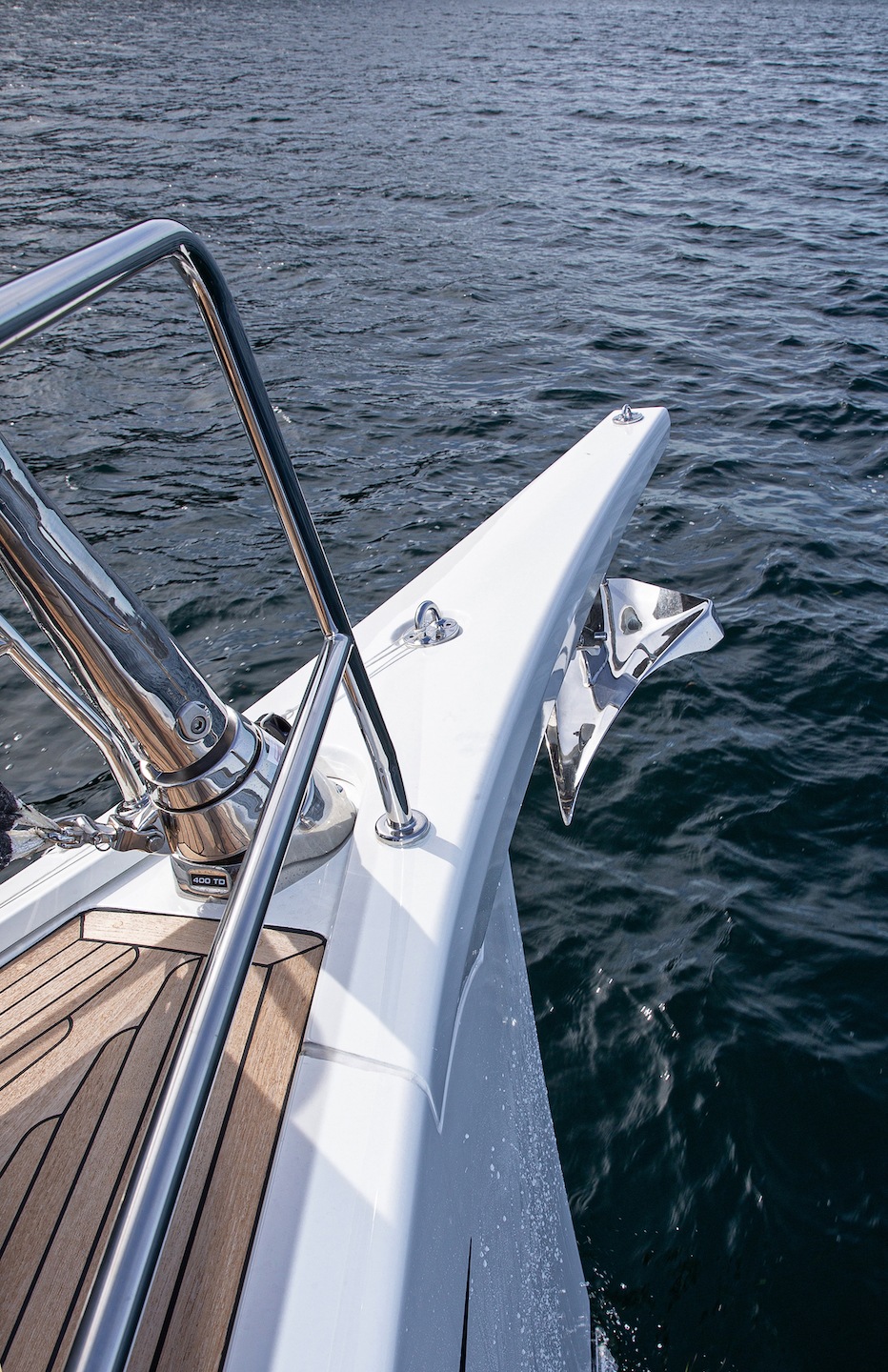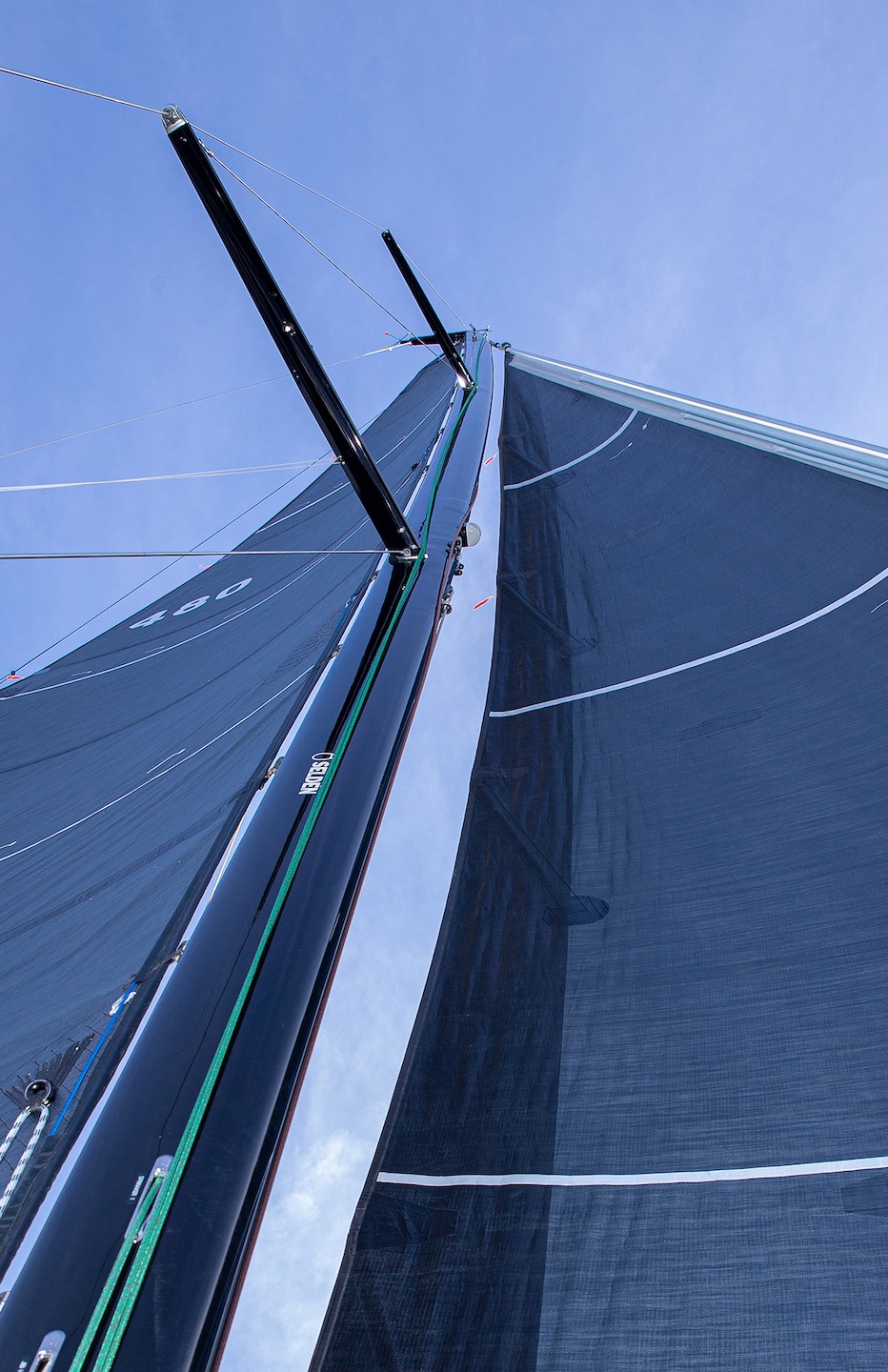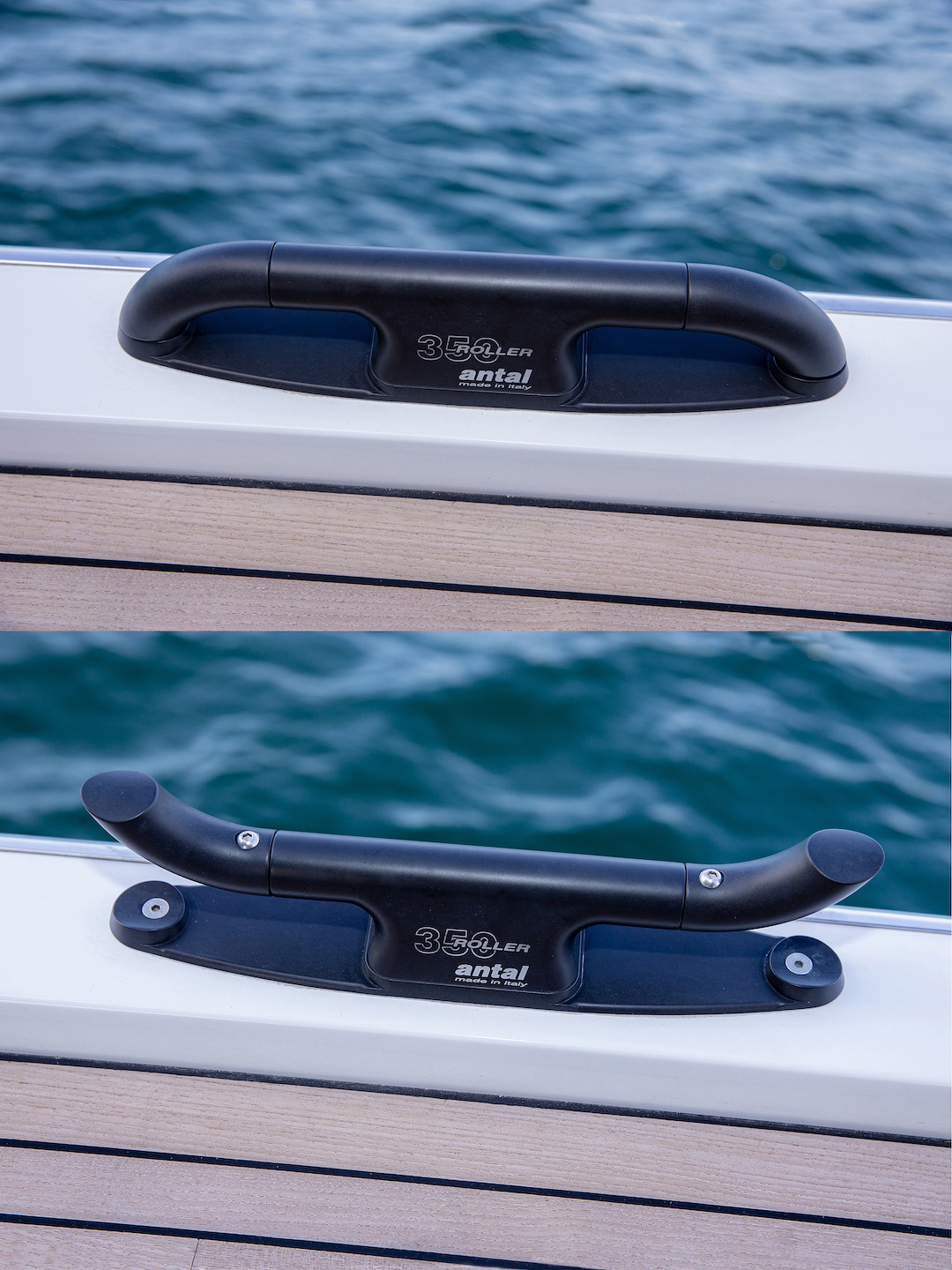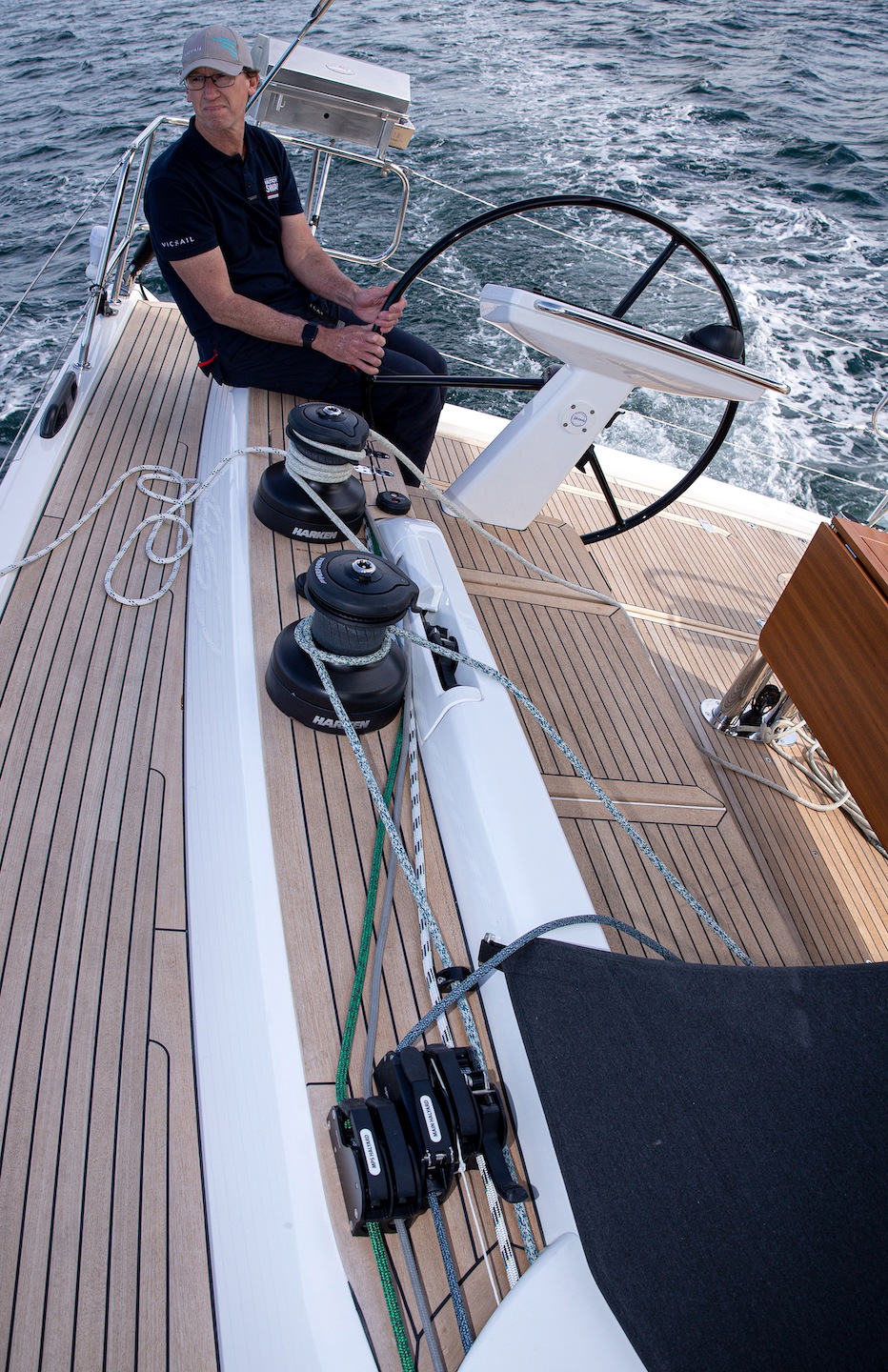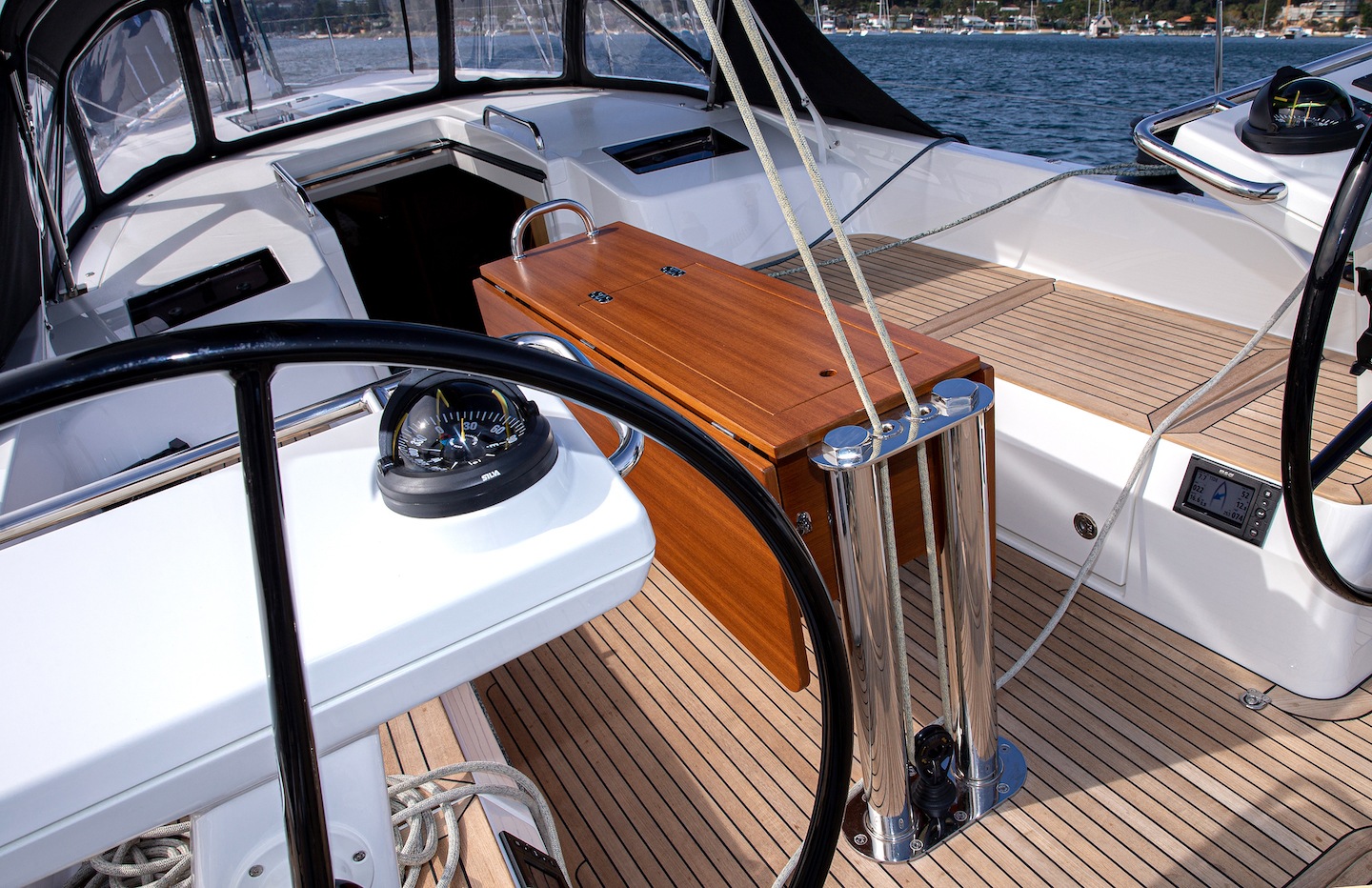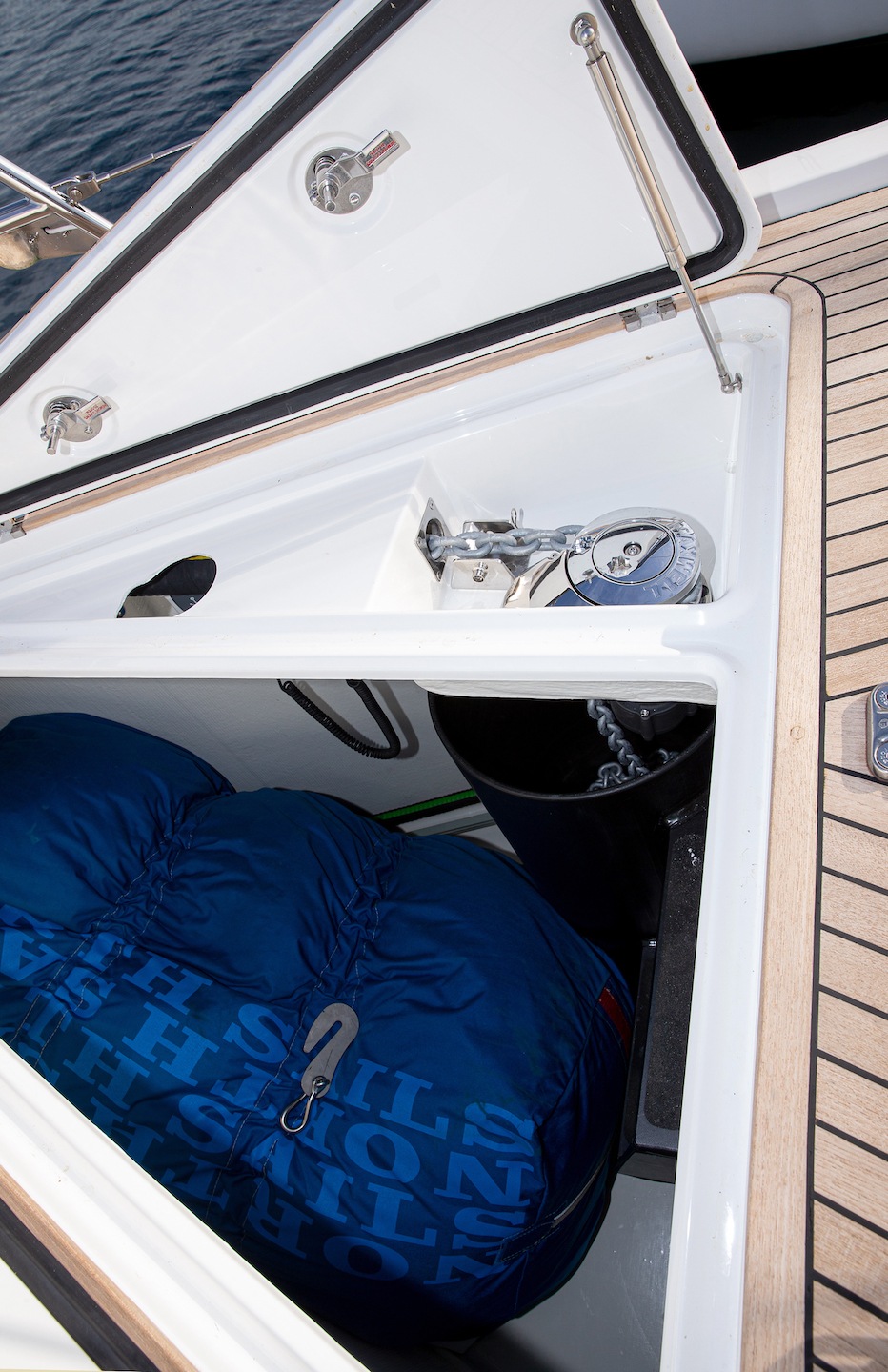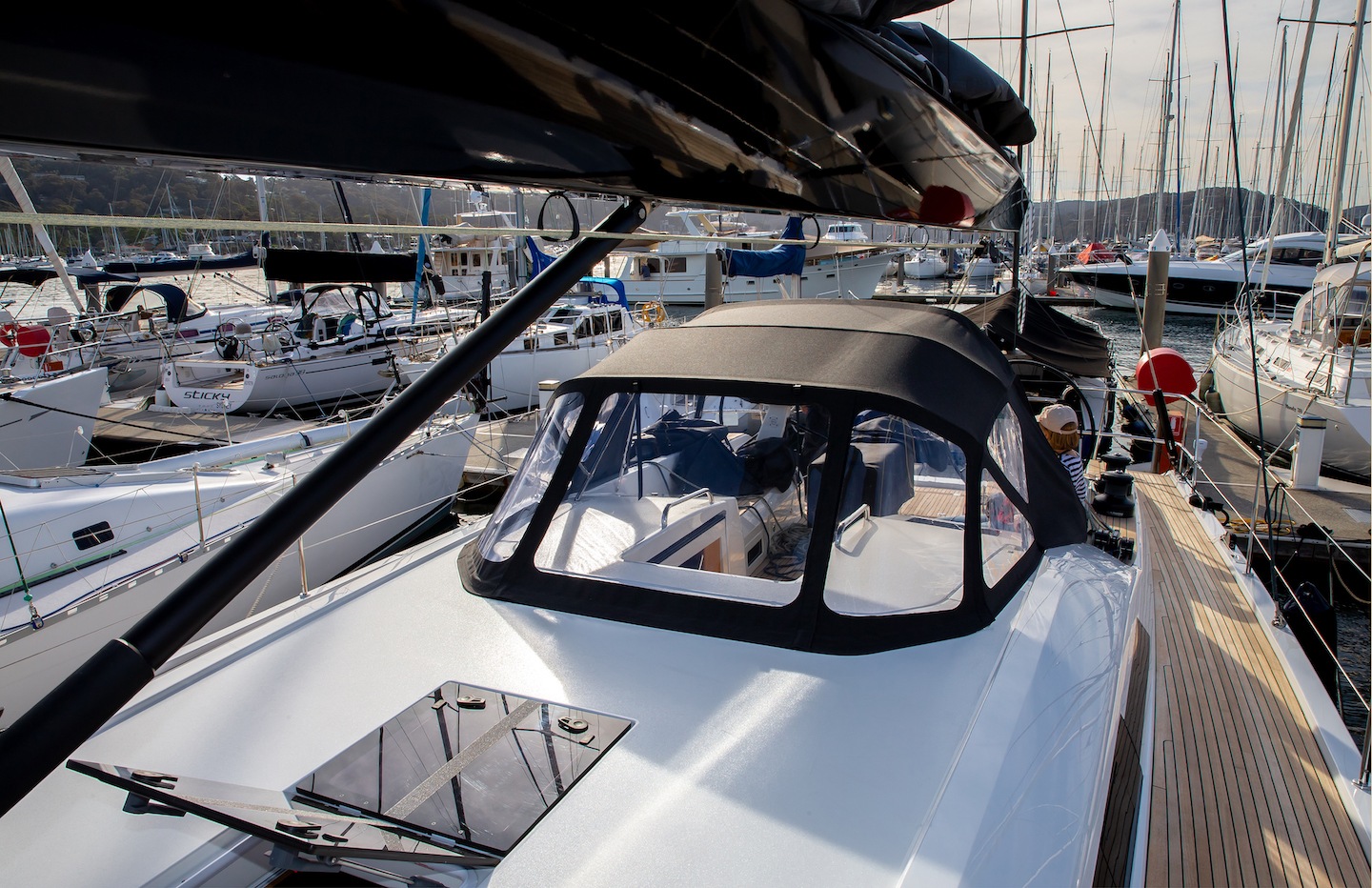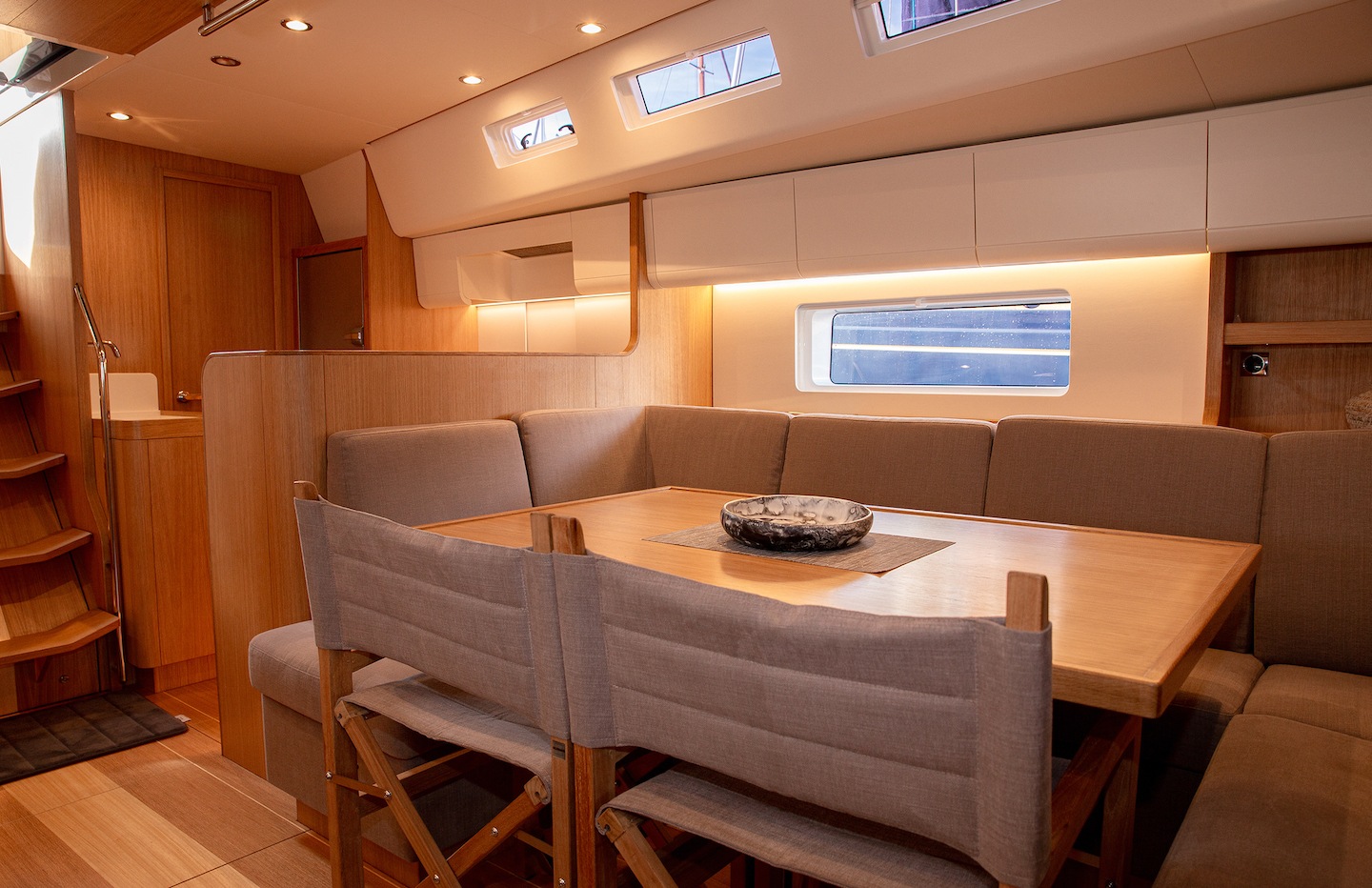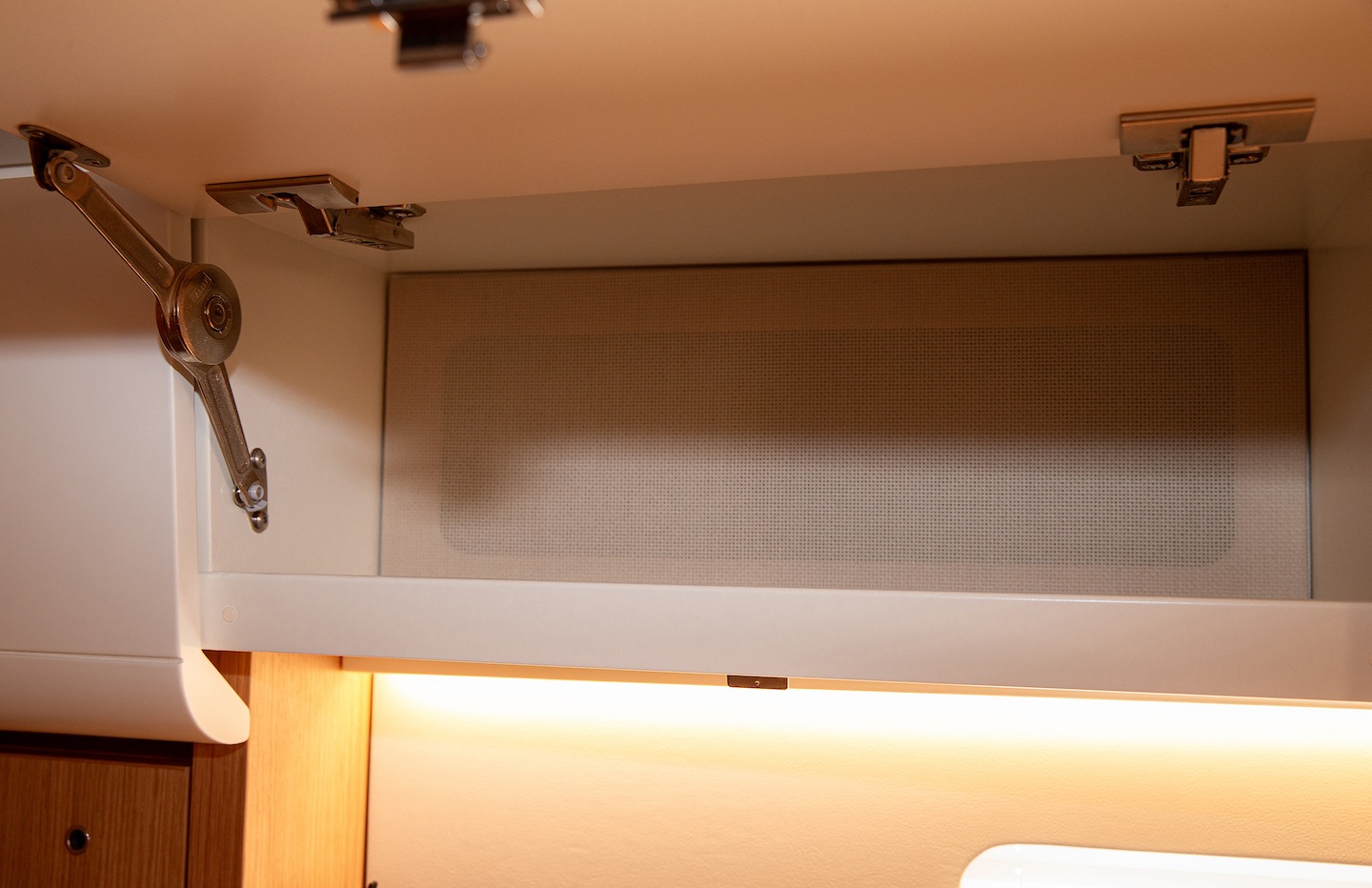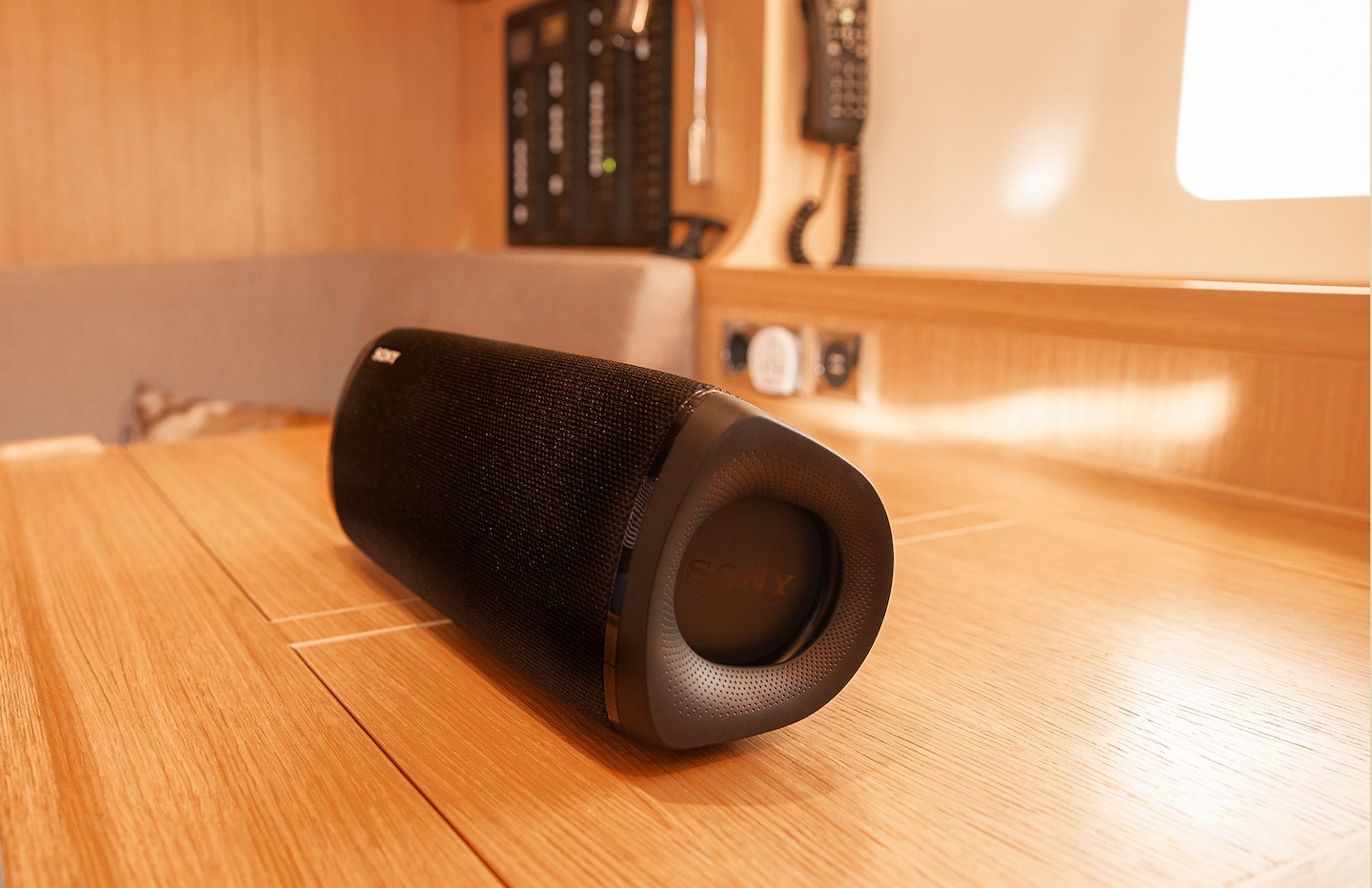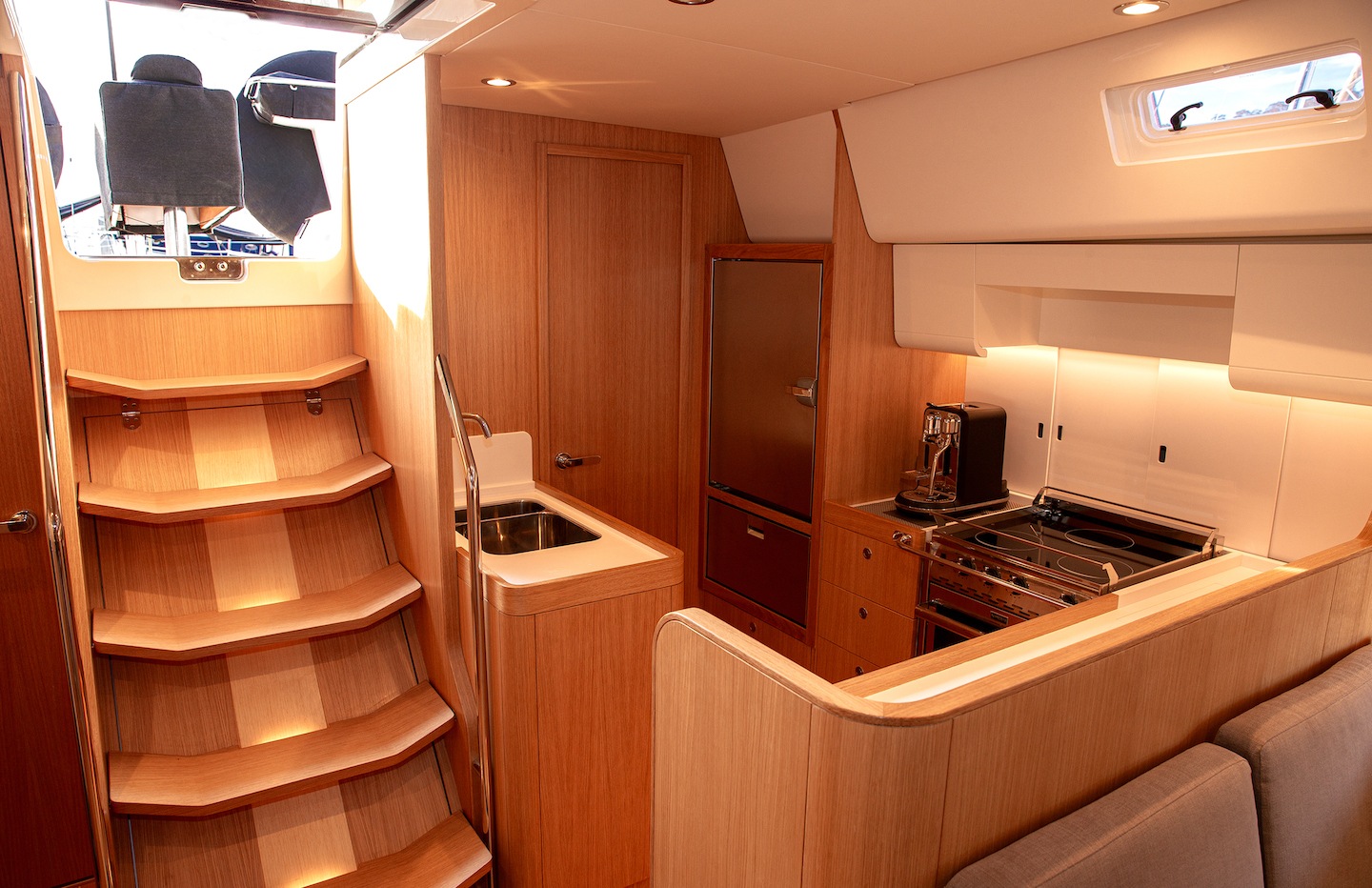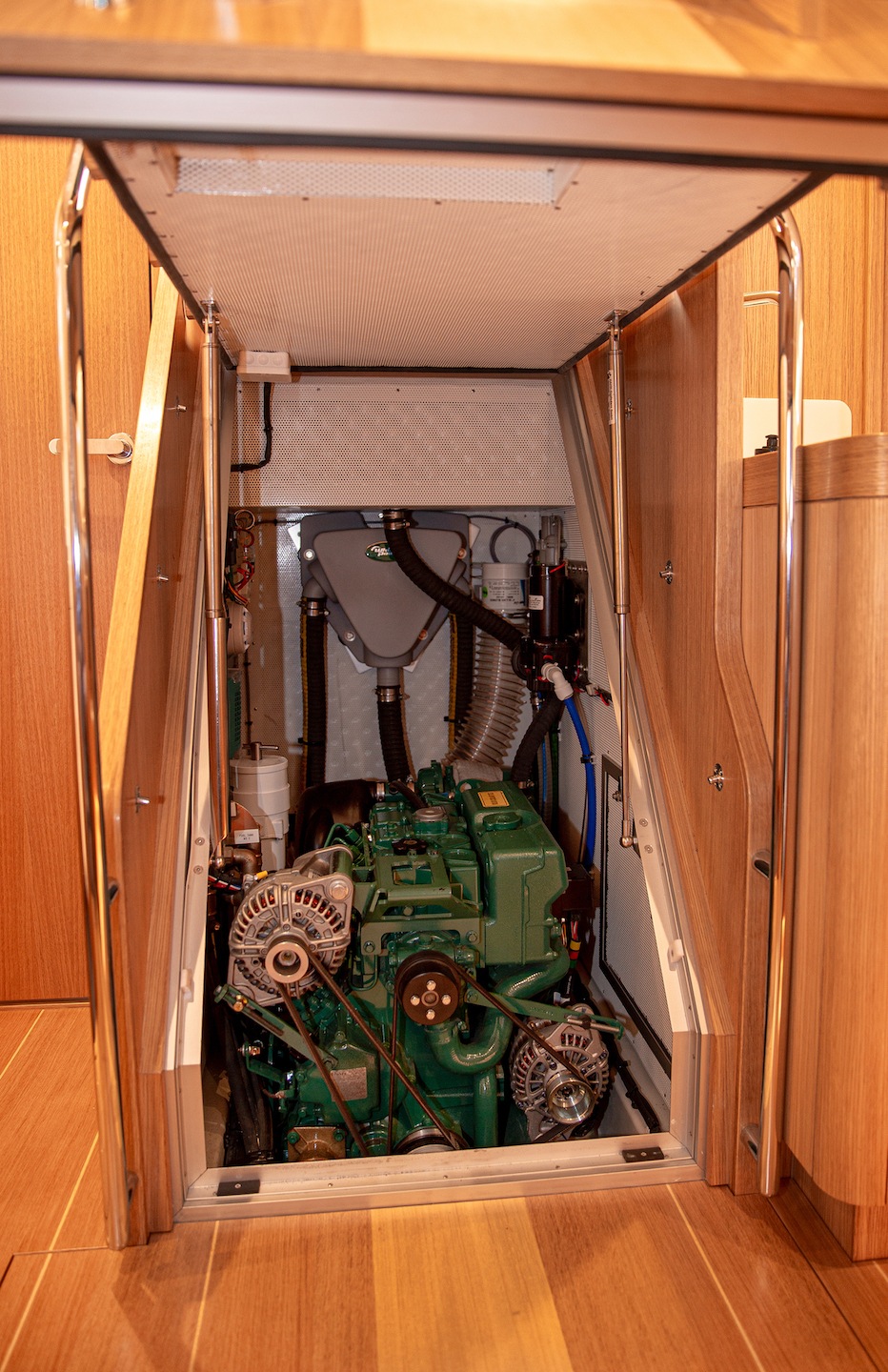Surprise packet
We test the Swan 48, a genuine performance cruiser made with an obsessive attention to detail.
Written by Crosbie Lorimer
Photography by Bow Caddy Media / Vicsail
23 September 2020
Advertisement
“All businesses need to be young forever,” opined Amazon chief Jeff Bezos recently, reflecting on the recipe for long-term commercial success.
Anyone who has followed the extraordinary success of Nautor’s Swan brand over its half-century history will know that the company first subscribed to that philosophy of constant reinvention when Bezos was still a toddler.
While holding true to their distinctive design style over those decades – you can spot a Swan coachroof from any era – the company has constantly evolved to meet the market’s changing expectations. Indeed, it seems that the older the company becomes, the more radical it gets, particularly if the out-there designs of the hugely successful Club Swan 50 and 36 are any measure.
The new Swan 48, Mk III at that length, epitomises the success of this philosophy with 16 of these yachts sold before the first boat was launched. Just as impressively, Nautor’s order books for the 48 are full through to 2022.
Advertisement
So why might an Australian spend anywhere from AU$1.2 to $1.6 million on a yacht built in Finland?
A brief sail of the first Swan 48 in Australia with Vicsail’s David Sampson during a beautiful spring day on Sydney’s Pittwater offered plenty of reasons why they might.
Maybe it’s the crisp air and sharp light close to the Arctic Circle that has always influenced the Nautor brand, but stepping up to the Swan 48’s deck immediately reminds you how clean their designs are – clean lines, clean decks, clean details, clean and airy interiors. What’s not to love there right away?
But there’s real substance behind that look too, as becomes clear when you examine the detail above and below deck.
Craftsmanship is subtly evident everywhere, from the seamless coachroof insert for stowing the sprayhood to the continuity of the wood grain in every floor panel of the main cabin. Open every cupboard below and the gauze fabric at the back hints at the passive ventilation ducting that has hallmarked every Swan yacht from the outset.
“The yacht was so well prepared when it left the yard in Finland that it took us only five days from its arrival in Sydney to fit the keel, put in the rig and be out sailing,” remarks David, endorsing Swan’s attention to detail and adding that the local trades also remarked on how easy final fixes were to complete on the Swan.
Heading out onto Pittwater, the Swan 48 hummed away nicely at a leisurely 2,200 revs with the 55kW Volvo saildrive pushing us along at 8 knots. A quick duck below to check the noise levels in the cabin confirmed that you could readily sleep with the boat under engine – and that matters to anyone interested in passage-making.
In the era of push-button sailing, David demonstrated that yachts of this size can easily be handled two-up, raising the 77-square-metre mainsail and unfurling the 66-square-metre jib effortlessly on his own.
The Swan 48 is no lightweight, checking in at 15 tonnes displacement, but even in a modest 8 to 10 knots breeze there was little evidence on the helm that this heft compromises performance in any way at all. The Jeffa steering is finger-light on the helm and with little effort the 48 soon leant into a building seabreeze on flat water, accelerating with ease.
With the instrumentation not yet fully tweaked on the yacht it wasn’t possible to judge performance accurately, but the design polars indicate that the 48 can turn in 7.5 knots upwind in 10 knots True Wind Speed and a very handsome 11 plus knots under spinnaker in 20 knots of breeze. Fast cruising in anyone’s language.
Such was the pleasure and ease of helming the boat upwind – the twin rudders have her turning with next to no effort – that a request soon came from the cockpit to wind back the enthusiasm at the wheel, “maybe a touch slower through the tacks if that’s okay” pleaded David as he dashed from one side of the cockpit to the other, to take up the new headsail sheet on the electric winches.
With the mast set well back in the deck the J measurement is large and offers plenty of opportunity for a range of sail options forward of the hounds. For those sailing shorthanded or cruising there is an option for a self-tacking headsail, while for racing or fast cruising a genoa or staysail can be set forward of the mast, with the option to fly a spinnaker from the bowsprit.
Looking around the spacious cockpit the most striking feature is the stainless steel structure attached to the end of the cockpit table which houses the German mainsheet system.
Opinions seem to vary amongst the social media keyboard warriors on the sailing scene as to the aesthetics and functionality of this feature. Aesthetics aside the design intent of keeping a safe and uncluttered cockpit suitable for cruising, with only a minor compromise to racing performance in the absence of a main sheet traveller seems practical and sensible. The proof of the concept will be if we see a similar feature appearing on other brands of yacht.
The second eyecatcher was the sprayhood. Sprayhoods rarely do much to complement the clean lines of a yacht’s coach roof – a classic feature of the Swan yachts over many decades – and with a relatively shallow cockpit and low coachroof the sprayhood on the Swan 48 is necessarily quite tall.
Given that proviso the Swan team have developed a smart sprayhood that can be housed neatly within the coachroof while providing ample shelter when set up; the felt-look fabric lends a sophisticated appearance, the clears offer excellent all round visibility and the sprayhood can attach to a bimini to enclose the entire cockpit if required.
It was interesting to note the options selected by this yacht’s new owner (an experienced racing yachtsmen) who is looking to cruise the yacht and race it socially.
It was clear that his preference was to keep things simple when shorthanded or on longer cruises. To that end, although the package was upgraded to include a carbon mast and boom, 3Di North sails and a deep draft keel for better performance, a bow thruster was not selected and the owner opted for a manual self-furler for the headsail. He also chose an electric stove for safety reasons and hence elected to include the generator option.
It was soon time to relinquish the helm (reluctantly) and check out below decks. And it’s when heading down the companionway that you really get the sense that this yacht is well designed for offshore sailing.
Simple details like the organisation of the galley to make for easy bracing rather than relying on the galley strap, grab holds everywhere throughout the interior and the inclusion of lee cloths for quarter berths, are features that make it clear that the Swan 48 will be a comfortable sea boat.
As to the quality of the interior? Well, as one recent reviewer put it: “There is no sense in questioning the finish on the Swan interior, so we won’t!” Hear, hear to that.
Options for interior fitouts will appeal to widely differing tastes, from those that like a bite of colour to those who prefer a simple and light-toned palette.
In any of these modes, the yacht’s interior is light and airy with ample storage, comfortable seating, a generous galley and full-height headroom throughout the main cabin. Better still, there’ll be a few broad-shouldered owners who’ll love not having to contort themselves to squeeze into the owner’s cabin ensuite shower!
Among Jeff Bezos’ many quotes on business success, one seems particularly apt for the creators of the Swan 48: “Your brand is what other people say about you when you’re not in the room.”
The Nautor’s Swan team have little to fear on that front.
Advertisement
Advertisement
Advertisement











